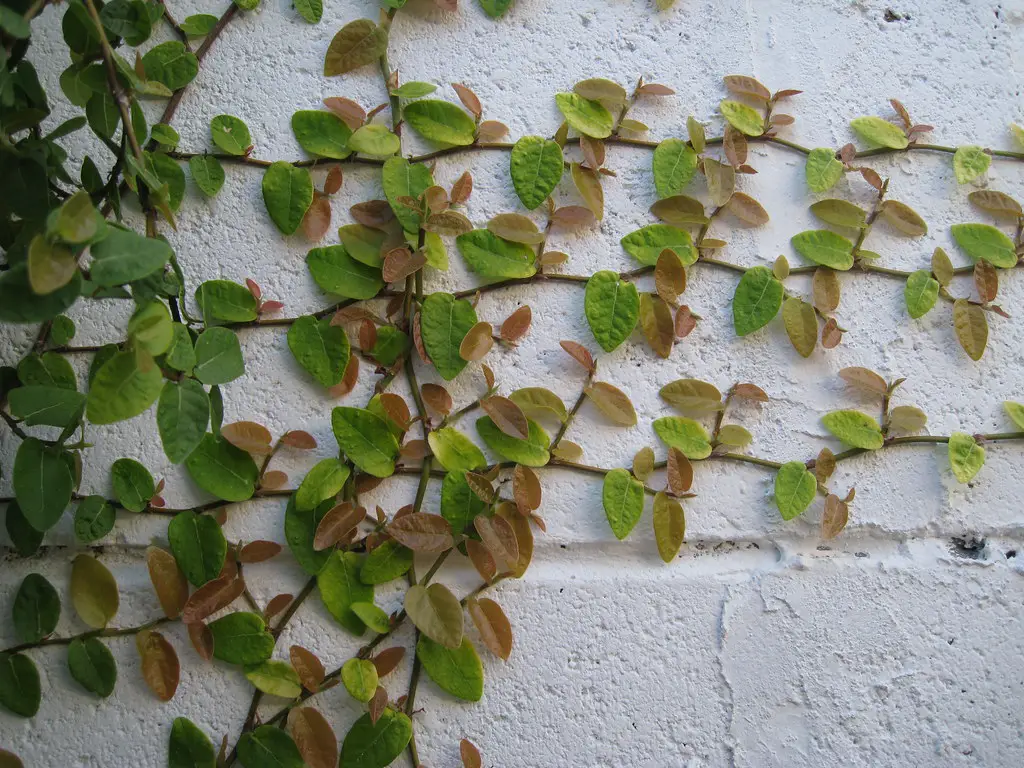Creeping Fig, also known as Ficus pumila, is a vigorous, fast-growing evergreen vine that’s well-known for its climbing and trailing habits. With its delicate and small leaves, Creeping Fig can cover walls, fences, trellises, and other structures, adding a lush green touch.
Native to East Asia, Creeping Fig is a versatile plant that is used both as an indoor houseplant and an outdoor ornamental. Indoors, it’s often grown in hanging baskets where its vines can tumble down. Outside, it’s used to soften and cover unattractive walls and other hard surfaces.
Although it’s a relatively easy plant to care for, Creeping Fig does have specific needs that should be met to thrive. Understanding its requirements for light, soil, water, and other care can make growing this charming vine a rewarding experience.
| Attribute | Details |
|---|---|
| Common Names | Creeping Fig, Climbing Fig |
| Botanical Name | Ficus pumila |
| Family | Moraceae |
| Plant Type | Vine |
| Mature Size | 15-30 feet |
| Sun Exposure | Partial to Full Shade |
| Soil Type | Well-Drained, Humus-Rich Soil |
| Hardiness Zones | 9-11 |
| Native Area | East Asia |
Creeping Fig Care
Creeping Fig can be an appealing addition to various landscapes or interiors, but proper care is essential. This plant prefers a shady spot but can tolerate some sun if acclimated gradually.
Regular watering, particularly during hot or dry periods, will keep the plant looking its best. However, care should be taken not to overwater, as Creeping Fig doesn’t like to have constantly wet feet. Regular pruning can also help keep this vigorous grower in check.
Light Requirement for Creeping Fig
Creeping Fig prefers partial to full shade, especially in hotter regions. If grown indoors, place it in a location where it will receive bright, indirect light. Too much direct sunlight may scorch the leaves, so some protection may be necessary.
Soil Requirements for Creeping Fig
Well-drained, humus-rich soil is ideal for Creeping Fig. This type of soil will provide the nutrients the plant needs without becoming waterlogged, which can lead to root rot.
Water Requirements for Creeping Fig
Water Creeping Fig regularly, keeping the soil evenly moist, but not soggy. Reduce watering during the winter months when the plant is not actively growing. If the plant is outdoors, ensure that it has enough water, particularly during hot or dry spells.
Temperature and Humidity
Creeping Fig does best in temperatures between 55-75°F (13-24°C). It’s not frost-tolerant, so if you live in an area where temperatures drop below freezing, it’s best to grow it in a container that can be moved indoors. As for humidity, it thrives in a more humid environment, especially when grown indoors.
Fertilizer
Feed Creeping Fig with a balanced liquid fertilizer every 4-6 weeks during the growing season (spring through early autumn). There’s no need to fertilize in winter when the plant is dormant.
Pruning Creeping Fig
Regular pruning can keep Creeping Fig under control. Pruning helps to manage its size and encourages bushier growth. Be careful, though, as excessive pruning may lead to a loss of leaves.
Propagating Creeping Fig
Creeping Fig can be easily propagated through stem cuttings. Simply take a cutting, place it in a pot with well-draining soil, and keep it moist. It should root in a few weeks.
How To Grow Creeping Fig From Seed
Growing Creeping Fig from seed is less common and can be a slow process. Plant seeds in a well-draining soil mix, keep the soil moist, and provide bright, indirect light.
Common Pests & Plant Diseases
Aphids
Aphids may infest Creeping Fig. These can be treated with insecticidal soap.
Scale
Scale insects may also be a problem, treatable with horticultural oil.
Common Problems With Creeping Fig
Leaf Drop
Leaf drop can be caused by overwatering or underwatering. Adjust your watering routine as needed.
Leaf Yellowing
Yellowing leaves may indicate a lack of nutrients. Fertilize as needed.
Pro Tips
- Choose the right location, providing shade or indirect sunlight.
- Keep the soil evenly moist but avoid overwatering.
- Prune regularly to control growth and shape.
- Watch for pests and treat them promptly.
- Consider growing in a container if you live in a region with freezing temperatures.




